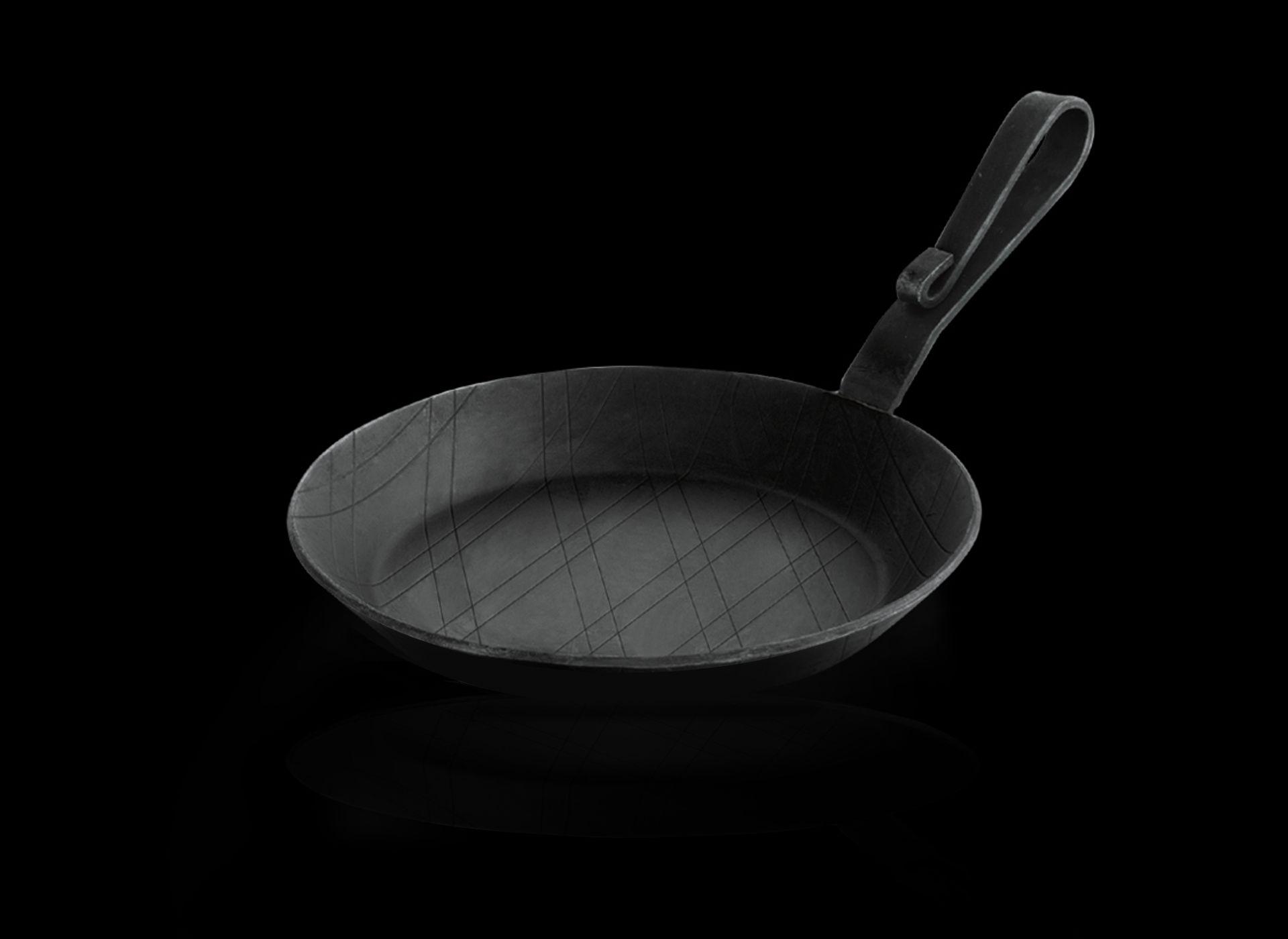Good pans are a must-have in every well-stocked kitchen – and iron pans in particular are a popular choice with professional cooks and restaurateurs. Our catalogue features a wide range of pans made from iron and cast iron (pp. 240-249). But what are the differences between the two materials and what’s the best way to care for them?
In this article, we provide an overview of the most important differences.
Material
Cast iron is an alloy of iron and carbon, whereas iron pans contain no or significantly less carbon. Both materials are very durable and long-lasting, provided you follow a few basic rules when it comes to usage and care – which we’ll tell you about in this article.
Iron pans
Iron is very malleable and virtually impossible to overheat. Though the material itself is heavy, iron pans are usually thinner and therefore lighter than cast-iron pans. This proves an advantage when tossing food in the pan, for example, as much less force is required.
Over time, iron pans develop a so-called “patina” that acts as a non-stick coating to prevent the contents from burning. However, highly acidic foods can corrode the material and cause it to rust.
Cast-iron pans
Cast-iron pans are often thicker and heavier than iron pans, which means they retain their shape and do not warp – even at extremely high temperatures. Here, too, the best frying results are achieved once the pan has developed a patina and you should avoid using it with foods that are too acidic or washing it with detergent.
Care
Both types of pan should be “seasoned” before they are used for the first time – but fear not, this is a very simple process. Here’s a step-by-step guide of one way you can do it:
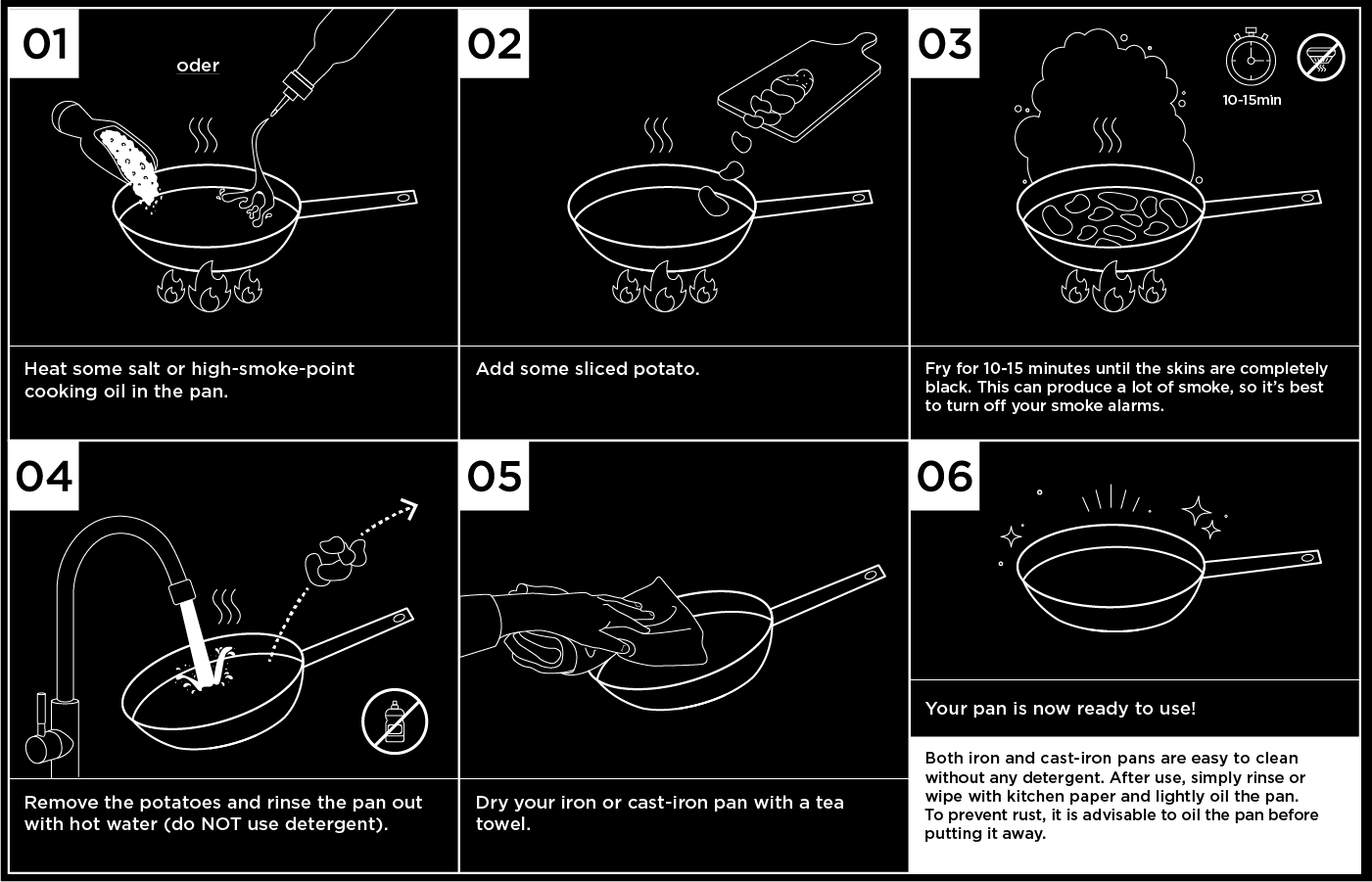
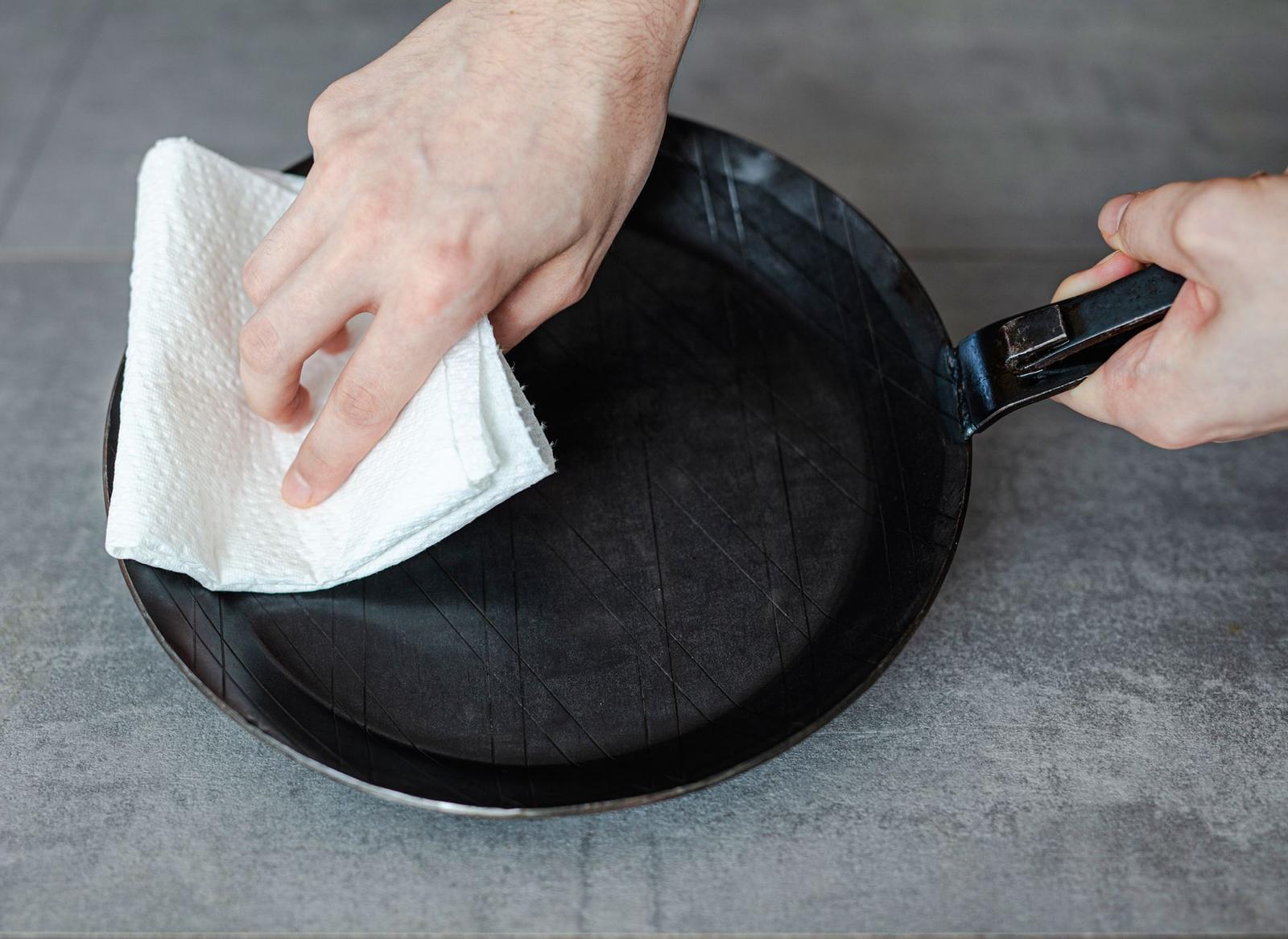
FYI: The dishwasher is a definite no-no for these pans. Also, never rinse hot pans – both iron and cast iron – with cold water, as this can damage the patina and warp the material.
Usage
In contrast to the classic iron pan, a cast-iron pan takes a little longer to heat up – but it retains this heat for longer and distributes it more evenly.
Both types of pan can be used to fry meat and vegetables, are suitable for all hob types and can also be put in the oven. They are even resistant to sharp objects like knives, making them super easy and low-maintenance to use in all sorts of settings and situations.
Here’s an overview of their properties and the main dos and don’ts when it comes to usage and care:
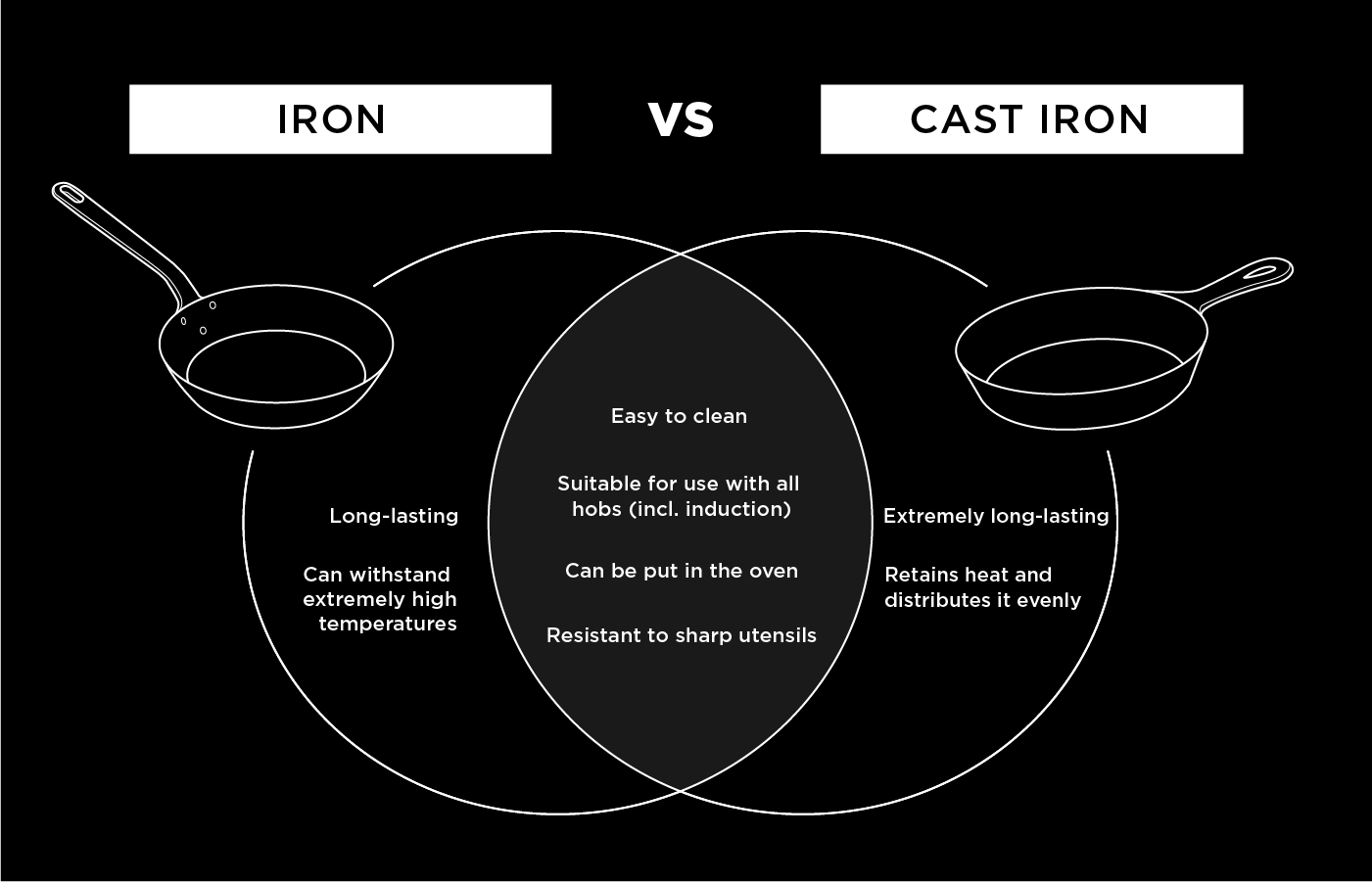
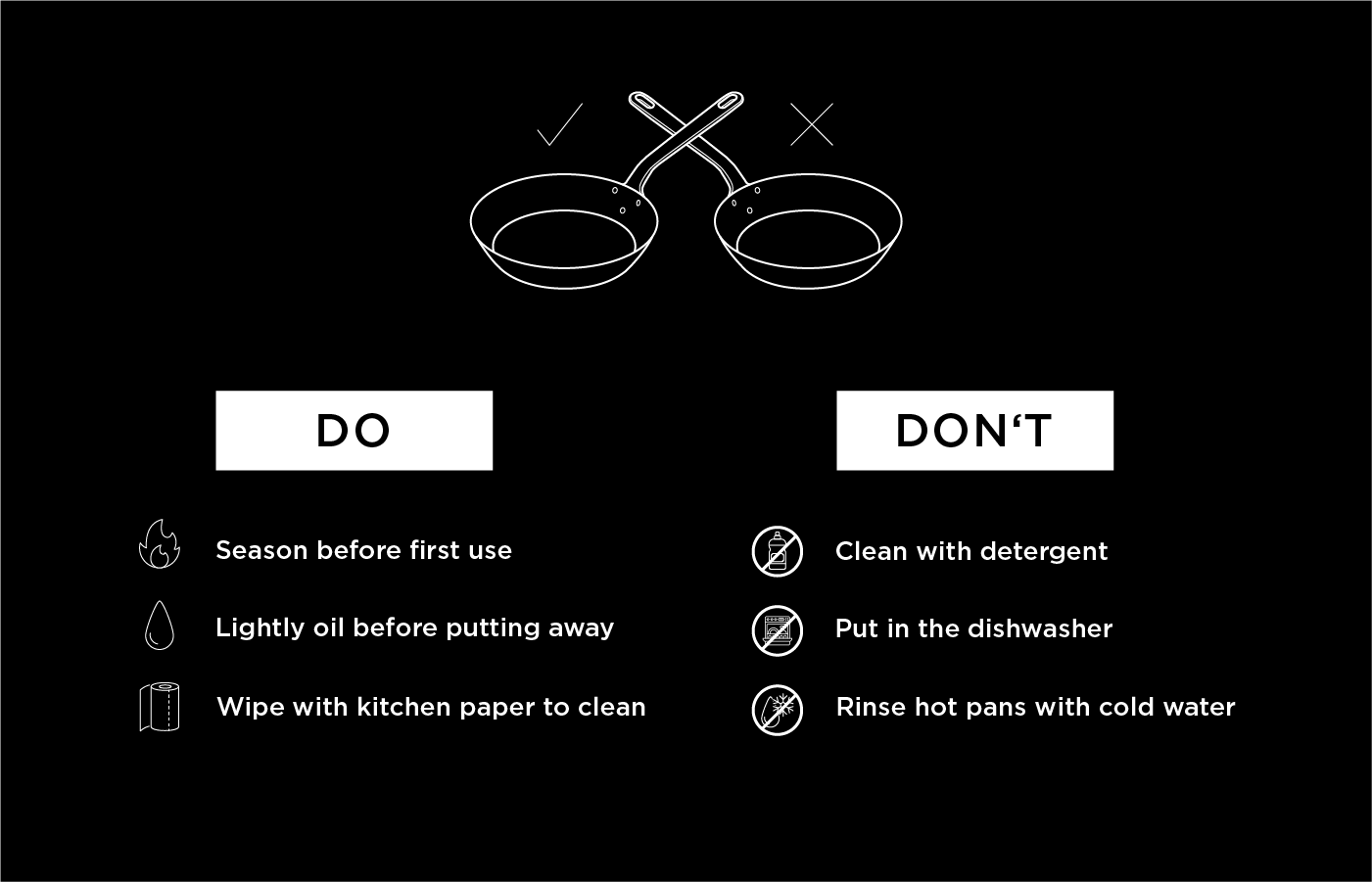
Do you have any questions about our iron and cast-iron pans? We would love to hear from you! Simply write to us at office@wasgermany.com.

